An "accessible" means of transport: what is it?
Published on
Focus on the different developments that contribute to the construction of a transport network that is accessible before, during and after a journey.
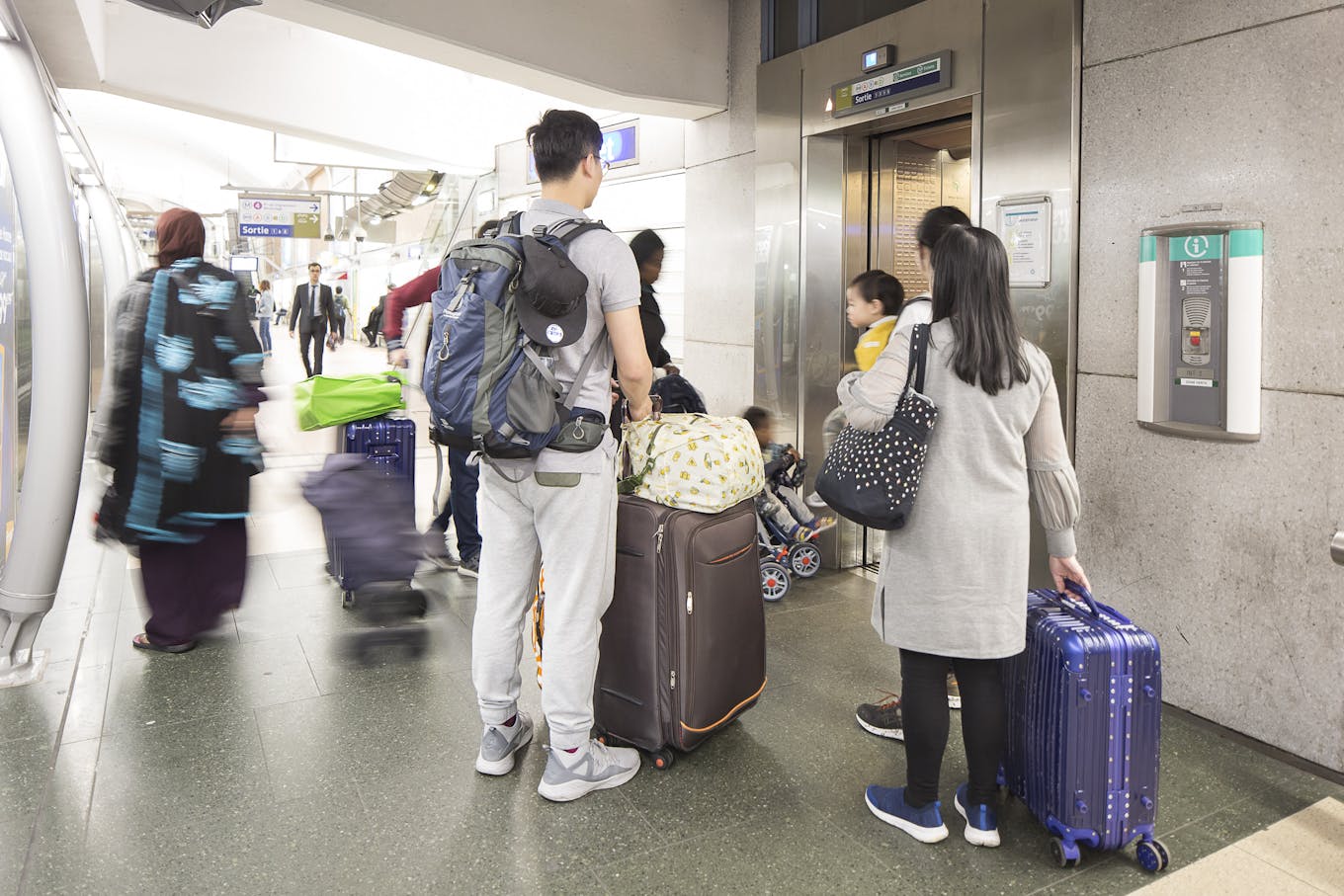
© Jean-Marc GOURDON - Ile-de-France Mobilités - an elevator on the platform of metro line 14 in Saint-Lazare
An accessible means of transport allows everyone, whatever their situation, to move independently.
A vision of accessibility defended by Île-de-France Mobilités, which invests every year in a policy of active transformation of its network, for and towards mobility that is increasingly adapted to its passengers. A policy carried out in conjunction with user associations, operators, local authorities and the Île-de-France Region.
Focus on the different developments that contribute to the construction of accessible mobility.
Before the journey: access to the buildings
- Development of the direct surroundings of stops, stations and stations and level and barrier-free access to infrastructure,
- Entrances and exits through automatic and stickered glass doors to facilitate circulation and arouse the vigilance of users,
- Warning pododactile strips indicating stairs, escalators, elevator, ticket office, entrance, exit and platform edge,
- Guide strips to help visually impaired people find their way,
- Widened passages for the comfortable circulation of all,
- Inclined planes to facilitate the passage of people in wheelchairs,
- Access ramps.
A station or station is considered accessible when a person with reduced mobility can access it without obstacle from its immediate vicinity on the road, move around and use the services offered for travel (reception, ticket sales, information and boarding the train).

© Christophe RECOURA - Ile-de-France Mobilités - guide strips on the floor of the Saint-Lazare station.
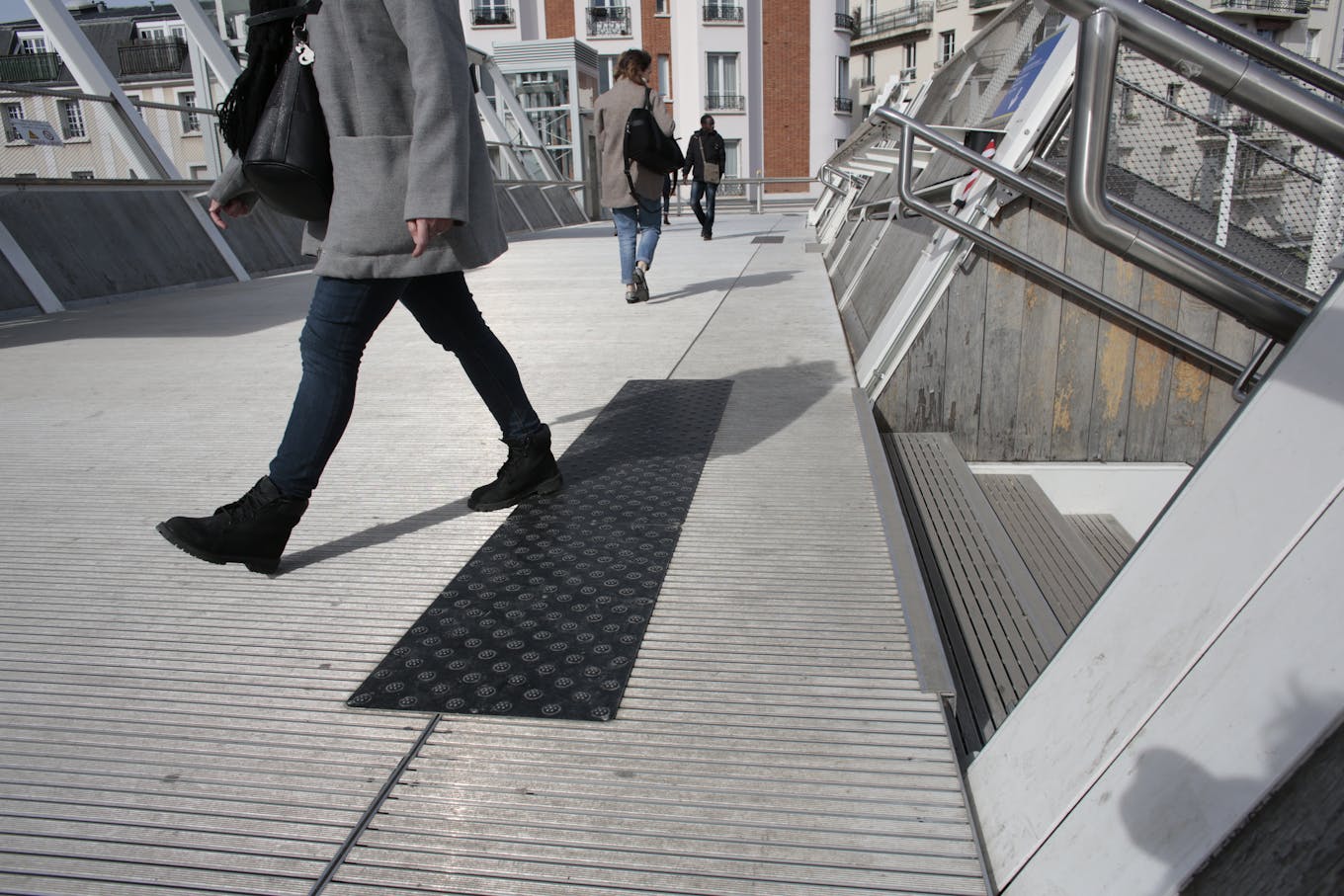
© Mélanie-Jane FREY - Ile-de-France Mobilités - pedodoctic strips at Bécon-les-Bruyères station.
Before the journey: access to information and ticketing
- Passenger information system both visual and audible,
- Lowered counters and vending machines for the use of wheelchair users,
- Voice aid for the visually impaired on the self-service machines,
- Presence of a magnetic tape, a listening assistance system installed at the ticket counter or on the bus for deaf or hard-of-hearing people,
- Staff trained in welcoming and informing people with disabilities,
- Sound beacons can be triggered with the universal remote control to locate entrances and service points for the visually impaired.

© Cyril BADET - Ile-de-France Mobilités - symbol of the magnetic loop in a bus.
Before the journey: access to platforms and tracks
- Waiting areas with seating,
- Widened platforms for comfortable circulation for all,
- Presence of escalators and lifts for access to the platforms,
- Passenger information system both visual and audible,
- Markings (pododactile strips) to raise awareness at the level of platforms, lifts, escalators and steps.
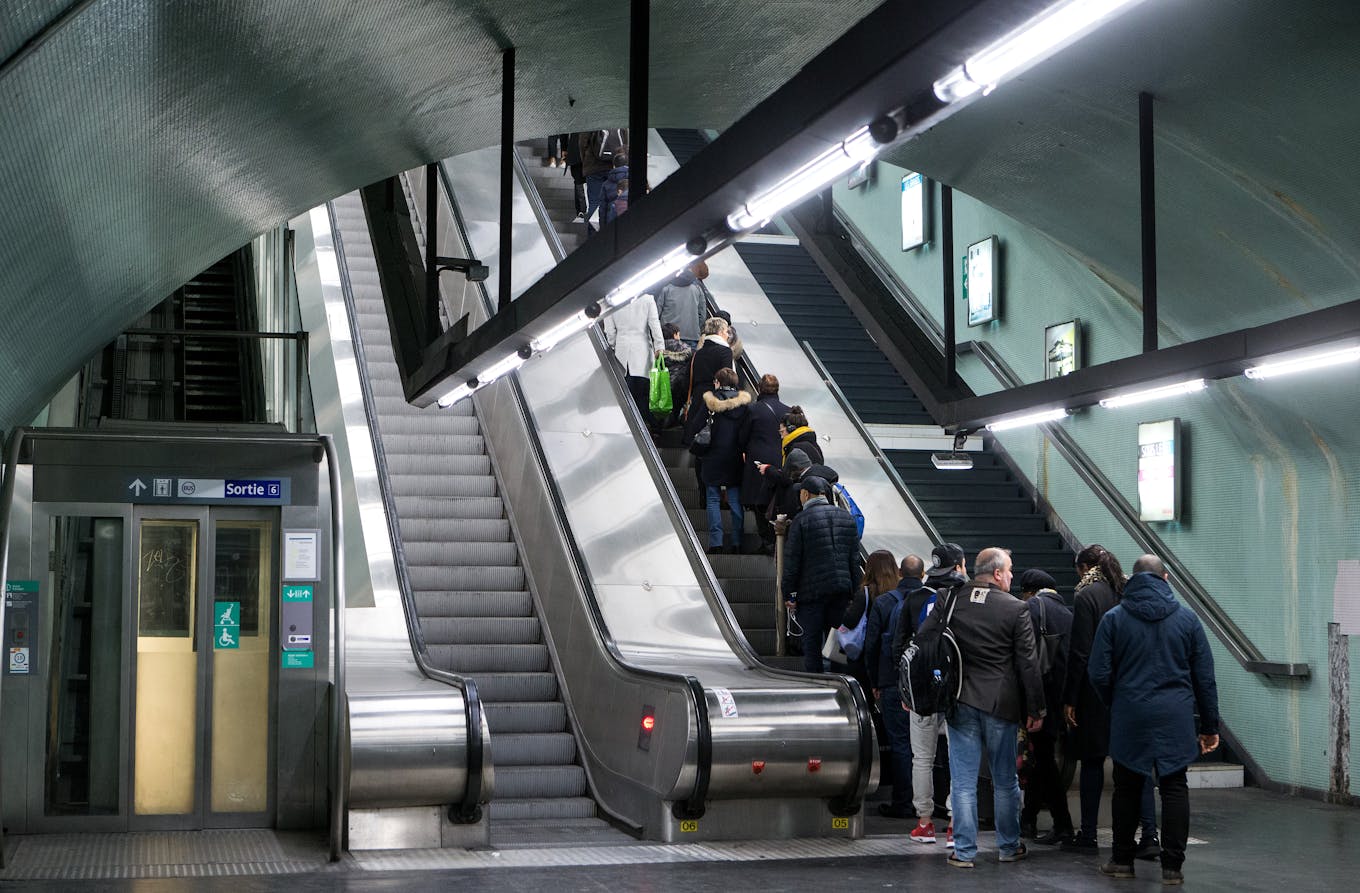
© Christophe RECOURA - Ile-de-France Mobilités - Escalator and elevator at Nation station on the RER A.
During the journey: on board
- Automatic opening of vehicle doors,
- Raised platforms : the platform and the train are at the same level to facilitate boarding the vehicle,
- Sound and light signal announcing the opening and closing of doors to awaken vigilance,
- Passenger information system both visual and audible to indicate the different stations at which the vehicle stops on the route,
- Spaces reserved for wheelchair users.
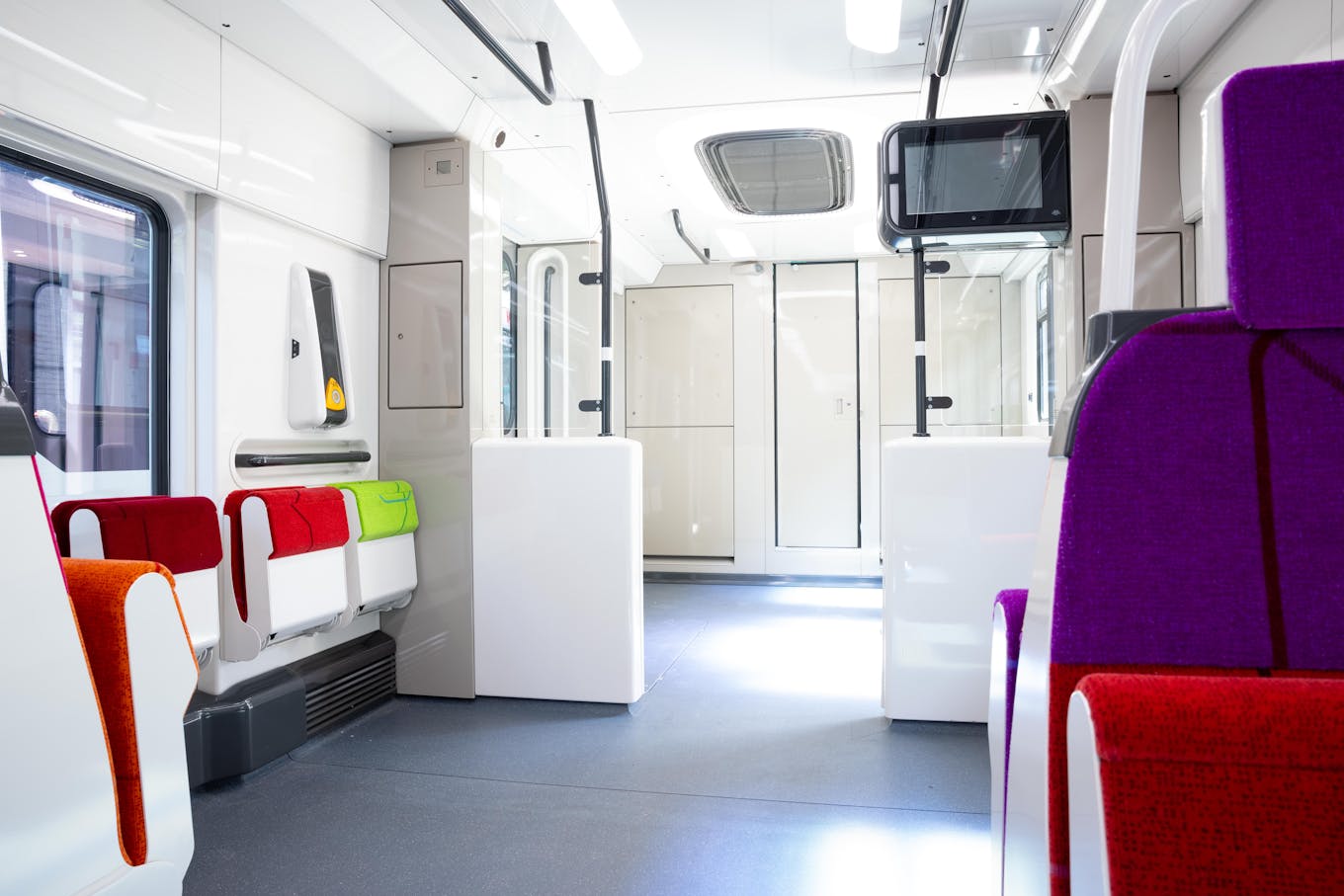
Inside the RER NG, a 100% accessible train. Here is a space reserved for people with reduced mobility.
On the road network
- At bus and tram stops, the pavements are adapted for wheelchairs and facilitate access for strollers and people with reduced mobility,
- Covered stops with seated waiting places,
- Buses equipped with a gap between the road and the bus to facilitate boarding,
- Wheelchair spaces on board.
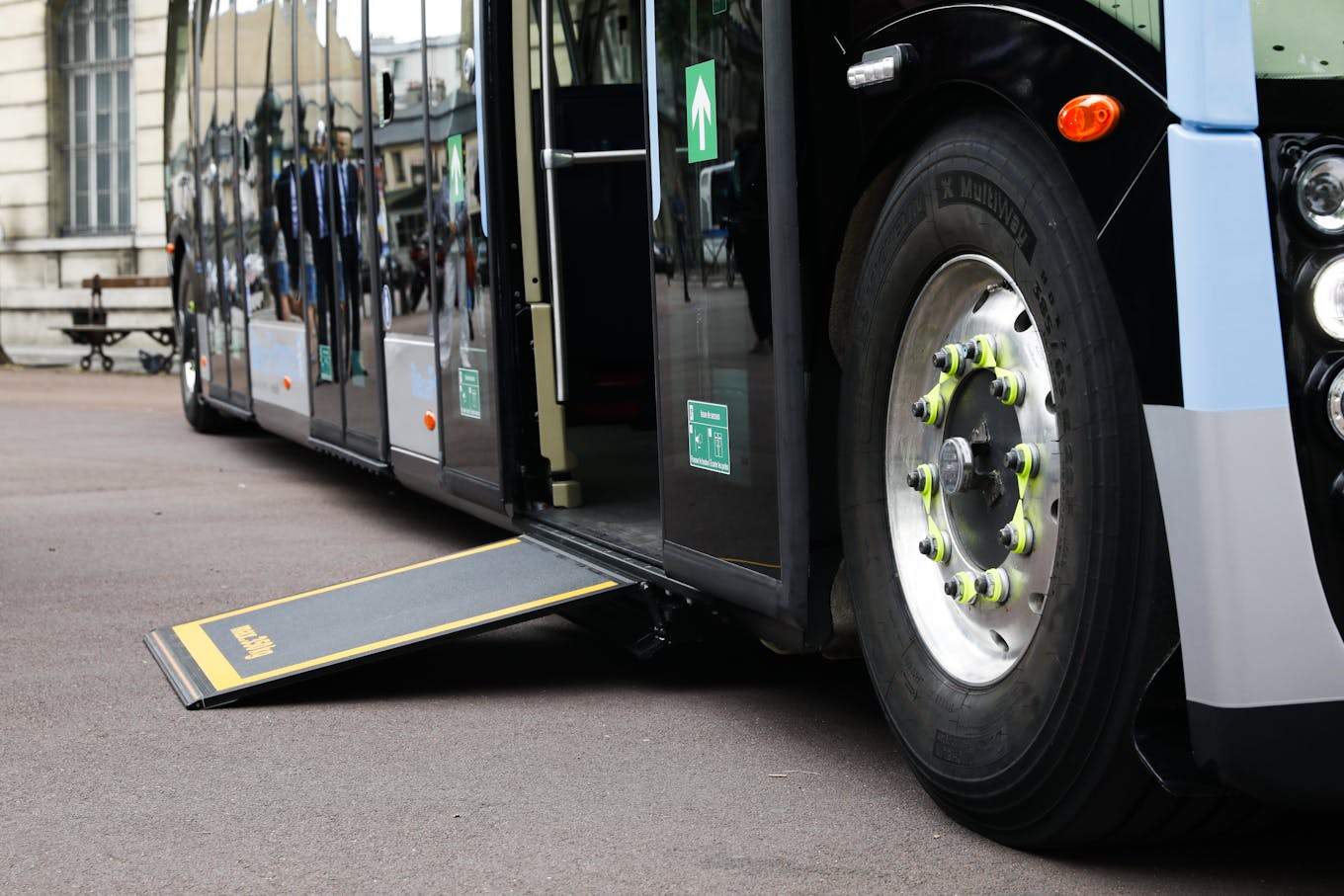
© Clermont FU - Ile-de-France Mobilités - Inauguration of the 100% electric Aptis bus in Versailles on 28 June 2017
Aware of the improvements and efforts that still need to be made, year after year, Île-de-France Mobilités invests in an increasingly accessible regional public transport network.
In addition to the concrete developments and work carried out on the network, other initiatives are being put in place to make it a little easier for people affected by mobility problems to get around.